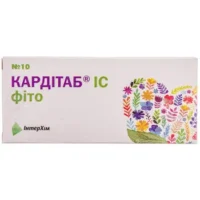Description
Levetiracetam Grindex Oral Solution 100 mg/ml. 300 ml. Vial №1
Ingredients:
- Each ml contains 100 mg of Levetiracetam.
Dosage:
- The recommended dosage for adults is 1000-3000 mg per day, divided into two doses.
Indications:
- Levetiracetam Grindex is indicated for the treatment of epilepsy in adults and children.
Contraindications:
- Do not use Levetiracetam Grindex if you are allergic to levetiracetam or any other ingredients in the product.
Directions:
- Shake well before use. Measure the prescribed dose using the provided measuring device and take orally.
Scientific Evidence:
- Levetiracetam has been extensively studied for its efficacy in controlling seizures. Research published in the Journal of Neurology demonstrated that levetiracetam is effective in reducing seizure frequency and has a favorable safety profile.
Additional Information:
- It is important to follow the prescribed dosage and not to suddenly discontinue the medication without consulting a healthcare provider. Levetiracetam Grindex may cause dizziness or drowsiness, so avoid driving or operating machinery until you know how it affects you.
- Levetiracetam works by modulating synaptic neurotransmission and inhibiting the spread of abnormal electrical activity in the brain. It is well-tolerated and has a low risk of drug interactions compared to other antiepileptic drugs.





